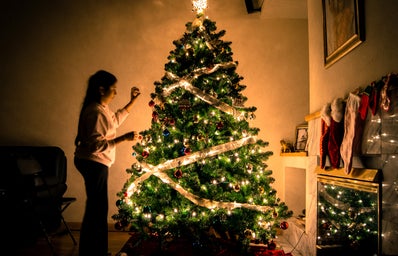The holiday season is known for its large environmental footprint. Time is spent buying gifts and wrapping presents, just to throw the wrapping paper right in the trash after the gift is opened. Christmas trees are chopped down or purchased from stores, and old artificial trees come up from storage ready to be plugged in and decorated. For many, Christmas would not be the same without a tree or decorations. The smell of evergreen filling the house and the comforting joy of ornaments being placed on tree branches start the holiday season on a good note. But what impact does decorate for a festive holiday season have on the environment?
Each year Christmas trees are grown at over 15,000 farms in the United States, employing over 100,000 people each year. These Christmas tree farms grow the trees like any agricultural crop, they are not cut down from forests like many belief. To make sure they can meet the demand for each tree cut down, growers plant one to three new seedlings. In addition, real Christmas trees absorb carbon dioxide and emit fresh oxygen.
Approximately 25-30 million real Christmas trees are cut down and used each year, whereas 21 million artificial trees are purchased. These artificial trees that come from China contain non-biodegradable plastics and metal toxins such as lead. After the holidays they often end up in landfills, emitting carbon into the air for years to come. Their impact is detrimental to the environment year-round.
Tree donation and recycling programs are available for you to dispose of your real tree after the holidays. By recycling your tree, it can become a renewable resource that can be repurposed. If you decide to purchase a live, potted tree, you can also opt to plant it outside your house after the holidays for a lifetime of memories.
If you do purchase a plastic tree, try to make use of it for as many years as possible, pass it down the line of your family, make memories with it. If you are thinking of disposing of your artificial tree, consider donating it, thrift stores, senior centers, schools, retirement homes and hospitals are all great options. You can also repurpose your old fake Christmas tree by turning it into wreaths, garlands, or other decorations. If you can, get a real Christmas tree, doing this is one step to better the environment and lower your carbon footprint. Make conscious decisions when it comes to holiday decorating, the choice is yours to make, and the environment will thank you.


